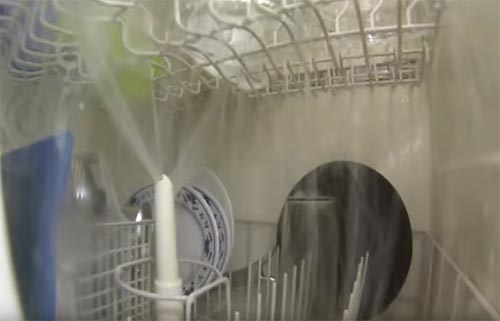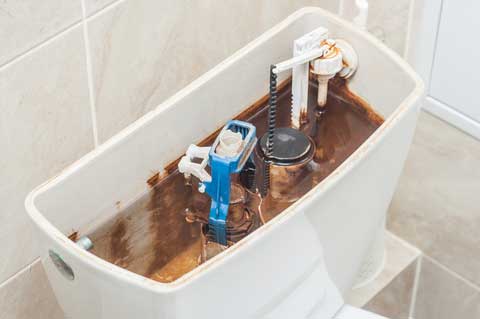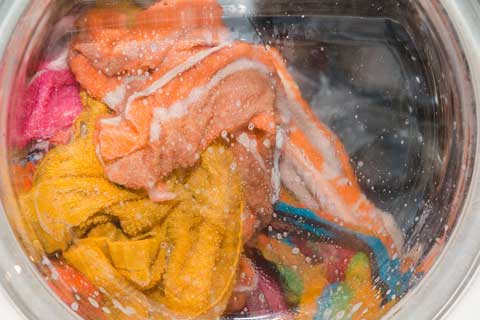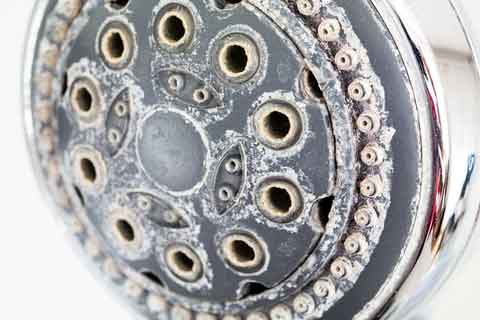Why is it important to Know How to Size a Water Softener
It’s important to properly size a Water Softener based on
water hardness and usage volumes, otherwise an undersized unit will be overtaxed
and wear prematurely, and an oversized unit will cost more up front than
needed.

If you buy a system that’s too small for the hardness
concentrations of your water supply at the volume that your family demands,
your softener may have to work harder to keep up.
An undersized system will need to cycle more often and use more electricity and water
with each cycle, than if the system was properly sized.
A system that’s too small will experience premature wear and possibly a shorter lifespan.
It’s possible that an undersized water softener might not be
capable of completely cleansing the softeners resin pellets during the
regeneration cycles.
A water softeners internal resin pellets usually have a
lifespan of around 10 years. A system
that is chronically over-taxed will cause the resin pellets to become spent far
too soon.
A water softening unit that is sized too large will cost
more than is necessary for the equipment
Effects of Hard Water
During the water cycle, water naturally picks up minerals as it filters through rock and soils. This extra mineralized water makes it to most household taps.
A high-concentration of minerals in the water supply is
referred to as hard water. The minerals
most responsible are calcium and magnesium, but iron can also contribute to this
condition.

As hard water flows through fixtures and appliances in your
home, you can experience the damage it can cause, such as…
- Spots or residue on washed dishes
- Scaly buildup on faucet aerators, shower heads, and under the rim of toilets
- Toilet fill valve encrusted and sticking or failing
- Soaps that don’t lather and clean very well
- Dishwasher that doesn’t wash or drain very well
- Reduced water flow due to clogged pipes and valves
- Clothing not being washed very well

Hard water can cost you serious money…
It takes considerably more energy to heat hard water in your water heater
Water-using appliances will have considerably shortened life spans. This includes:
- Hot Water Heater
- Dish Washer
- Clothes Washer
- Faucet Fixtures
- Toilets
- Refrigerator Water dispenser and ice-maker
- etc.

To Correctly Size a Water Softener
Since you’re considering on installing a water softener, to
get the model that will accommodate the volume of water your family consumes,
you’ll need to know a few things:
- If you have municipal water, you can derive this daily average from your last water bill.
- Or if you’re on your own well, you might have to take an educated guess or install an inline flow meter on your incoming line.

- Or you can just use the U.S. national average of usage of 75 gallons per person per day.
- Get an idea of your family’s daily water usage:
- If you have municipal water, you can derive this daily average from your last water bill.
- Or if you’re on your own well, you might have to take an educated guess or install an inline flow meter on your incoming line.
- Or you can just use the U.S. national average of usage of 75 gallons per person per day.
- Measure your Water Hardness Level in one of 3 ways:

- Buy a Hardness Test Kit from your local hardware store and do it yourself. This easy and inexpensive option is sufficient to determine the hardness of your water, plus you’ll be able to test it several times with the kit.
- Bring a bottle of your water sample to your pool store. Have it tested for Hardness, Iron, and pH. If you want to test for bacteria, you’ll have to test it yourself or have a lab test it.
- If you want a more comprehensive analysis, you may want to send a water sample to have a lab test it. Certified government or university labs will usually charge only a nominal fee, whereas private labs usually charge more.
Well Water:
If you are on well water, then make sure your test kit can also measure the iron level of your water, or buy an additional kit that measures iron.
Iron is measured in Parts per Million (PPM).
Depending on where you live, and whether you get your water from a municipal source, or from your own well, your tap water will contain a certain amount of calcium, magnesium and iron ions. The higher the concentration of these ions in the water, the harder your water is.
If you have municipal water, you can do a quick internet search, “water quality report, your town” and you’ll likely be able to download a free report. Either that, just give them a call and ask, “What’s the average water hardness level of the water that’s leaving your facility?”.
The two minerals that affect hardness the most are calcium and magnesium, but iron also plays a part.
If you are sending a sample of your water away for hardness testing, make sure they also test for iron.
When you receive your test results back, you need to decipher the data.
Here’s an example:
Let’s say your test kit, or your hardness report shows that your water has 20 GPG (Grains per Gallon) of hardness, and let’s also say the iron content is reported to be 2 ppm (parts per million):
Hardness: 9 GPG, Iron: 2 PPM
When we compare the 9 GPG to the Water Hardness Chart, it appears our water is Hard, and needs softening.
Water Hardness Chart
| Grains Per Gallon | PPM or mg/L | Water Hardness |
|---|---|---|
| Less then One | Less than 17.1 | Soft |
| 1 to 3.5 | 17.1 to 60 | Slightly Hard |
| 3.5 to 7 | 60 to 120 | Moderately Hard |
| 7 to 10 | 120 to 180 | Hard |
| Over 10 | Over 180 | Very Hard |
When iron is present in the water supply, the hardness value must be corrected. For every 1.0 PPM, or mg/L of iron, 3 Grains per Gallon of hardness needs to be added to the total hardness value.
So let’s factor in the iron to the hardness reading. This is very easy to do. We just need to convert the iron Parts per Million (PPM) into Grains per Gallon (GPG)…
2 PPM (iron) x 3 GPG/PPM = 6 GPG
NOTE: If a lab report gives figures in milligrams per liter (mg/l), the conversion is very
close to the parts per million conversion factor. You can just use the same conversion factor
as PPM to get Grains per Gallon (GPG).
Now, in our example, let’s add in the total Hardness:
6 GPG (from
iron) +
9 GPG (Hardness) = 15 GPG
This 15 GPG is the hardness of your water supply,compensated for the iron in your water.
We will use this figure below…
Determine Your Household Water Usage
Let’s say you have 4 people in your household. An average person uses about 75 gallon per day. This includes water for showering/bathing, flushing, cooking, drinking, etc.
4 people x 75 gallons/person = 300 gallons of water used per day.
Now we can determine your daily water softening requirement. Just multiply your water hardness,
compensated for the iron content (15 GPG from above) by your daily water usage (300 gallons).
15 Grains/Gallon x 300 Gallons/day = 4,500 Grains per Day
This tells us that the Water Softener will need to remove 4,500 Grains per Day.
A water softener will usually regenerate once every week, so multiply the daily requirement by 7 days, as shown here:
4,500 Grains/Day x 7 Days = 31,500 Grains per Week
Now, because Water Softeners do not operate at 100% efficiency, we need to factor that in. Most water softeners operate at about 65% efficiency, so we divide the weekly need by the efficiency factor:
31,500 Grains per Week / 0.65 (efficiency factor) = 48,461 Grains per Week
Now we finally know that the Softener we select, has to accommodate 48,461 grains per week. Let’s now select the Proper Size Water Softener…
Water Softeners are rated in Thousands of Grains. Typical sizes of softeners are:
| 24,000 grain | 40,000 grain | 50,000 grain |
| 30,000 grain | 42,000 grain | 60,000 grain |
| 32,000 grain | 44,000 grain | 64,000 grain |
| 33,000 grain | 45,000 grain | 80,000 grain |
| 35,000 grain | 48,000 grain | 96,000 grain |
The water softener with the 50,000 grain rating would be the best selection for your 48,461 grains per week requirement.
See the Home Water Softeners Review Page
